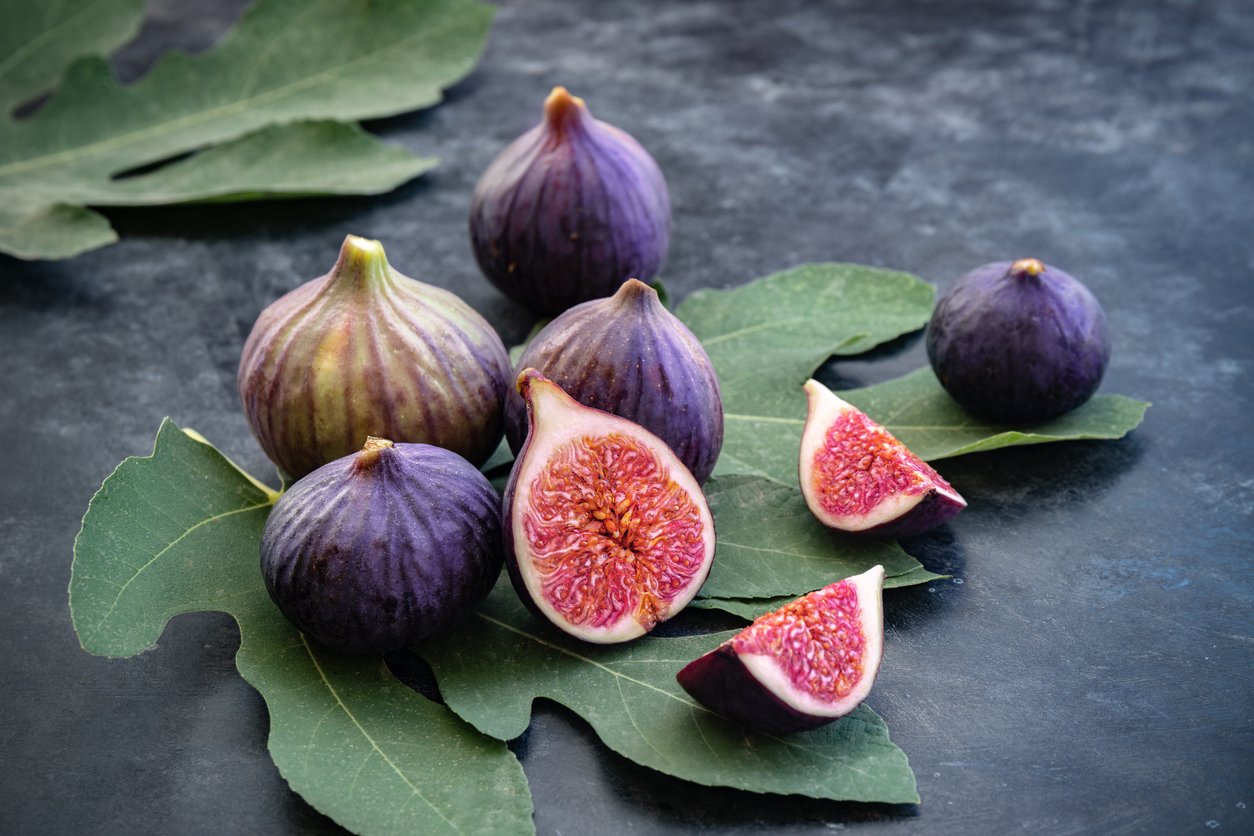In a move that shocked fig lovers around the globe, Nabisco dropped the “Fig” from the name of its iconic dessert bar in 2012, rendering them just “Newtons.” Allegedly, it was because figs are no longer cool, having been replaced on the trendy lists by things like goji berries and pomegranates. Yet elsewhere in the world, figs have a somewhat risqué connotation.
In the 1944 hit song “Swinging on a Star,” Bing Crosby croons, “If you don’t care a feather or a fig, you might grow up to be a pig.” While the lyric seems nonsensical at first, the concept originates from the Spanish phrase “non darsele un higo,” which means “not to care a fig.” It’s sometimes illustrated by an obscene hand gesture called The Fig of Spain, which isn’t far off from an obscene Italian gesture called “the Mano Fico” (or fig hand).
Although I could continue on into the historical, cultural, and etymological origins of one of the world’s great fruits (Adam and Eve wore fig leaves, after all), instead, I want to point out how fabulous figs are (risqué or not) and give you some inspiration for how to use them in recipes.
There are so many reasons to think figgy when you’re cooking. Incorporating figs into recipes not only adds sweetness but a depth of flavor as well. Figs can be used both fresh and dried. And they can be used to enhance both sweet and savory dishes.
So let’s dive into the world of figs, exploring their nutritional value, health benefits, availability, storage methods, and creative ways to incorporate them into your culinary repertoire. When we’re done, I’m sure you’ll “care a fig” about these amazing fruits!
Why Eat Figs?

Because they’re delicious and nutritious, that’s why!
Nutritionally speaking, figs are a rich source of bioactive compounds and phytochemicals, including antioxidants, phenolic compounds, polyunsaturated fatty acids, phytosterols, and vitamins. They also deliver essential minerals such as potassium, calcium, phosphorus, copper, manganese, and the much-needed magnesium (some researchers consider magnesium deficiency to be a global public health crisis). And figs, as proud members of the plant food family, deliver fiber as well.
As part of a balanced diet, figs can play a role in preventing and managing various diseases and conditions, including cancer, diabetes, constipation, cardiovascular disease, and disorders of the gastrointestinal tract.
And thanks to their natural sweetness, they can “healthify” recipes that might otherwise require refined sugar or other highly processed sweeteners.
When and Where to Buy Figs
Figs originated in the Middle East and Mediterranean regions and are primarily grown in warm climates. Top producers of figs globally include Turkey, Greece, Spain, Iran, and Syria. The US is no slouch, either, with the vast majority of commercially grown US figs coming from California, even though the trees were introduced there only within the last two centuries.
If you’re looking for fresh figs, you’ll find them in season during the summer and fall months in the northern hemisphere, and in the winter and spring months in the southern hemisphere.
Dried figs are available year-round and can be found in the produce section or snacking aisle of grocery stores, or the dried fruit section of Middle Eastern markets. You may also score figs at farmers markets, CSAs, and in produce boxes. Residents of California are particularly fortunate fig-wise since the state boasts a wide variety of figs, both fresh and dried.
How to Choose a Ripe Fig

Fresh figs can be anywhere from round to slightly oblong in shape, wider at the flower end, and tapering to a point where they were joined to the tree. Depending on the variety, the interior flesh of figs may be purple, yellow, or green. Fig skin darkens as they ripen.
Look for figs that are plump and soft to the touch, with slightly wrinkled skin. You’ll also want to sniff them; ripe figs have a sweet, earthy scent. If you get a whiff of sour (or the sickly sweet pong of red wine that’s been sitting in the heat too long), keep walking. Those figs are starting to ferment, and will not be fun to eat or cook with.
When selecting dried figs, look for ones that are plump and moist, with a slightly sticky texture. Avoid figs that are hard, dried out, or shriveled, unless you’re in the mood for some high-intensity chewing practice.
How to Store Figs
Fresh figs are best when stored in the refrigerator. They’ll typically last 5–7 days there, but if you buy ones that aren’t completely ripe, they can last up to two weeks. Fortunately, the recipes below will make it easy to move those figs from the fridge to the table in plenty of time.
Dried figs will last for six months to a full year if stored in a cotton produce bag in your pantry. If you’re concerned about insect infestations, you can add wild fennel, bay leaves, and/or anise seeds to the bag to disguise the smell of the figs and deter bugs. You can also keep dried figs in an airtight container on a shelf in your fridge, where they’ll be good for up to a year, or even freeze them, which can extend their edible life span to a year and a half.
How to Use Figs in Recipes
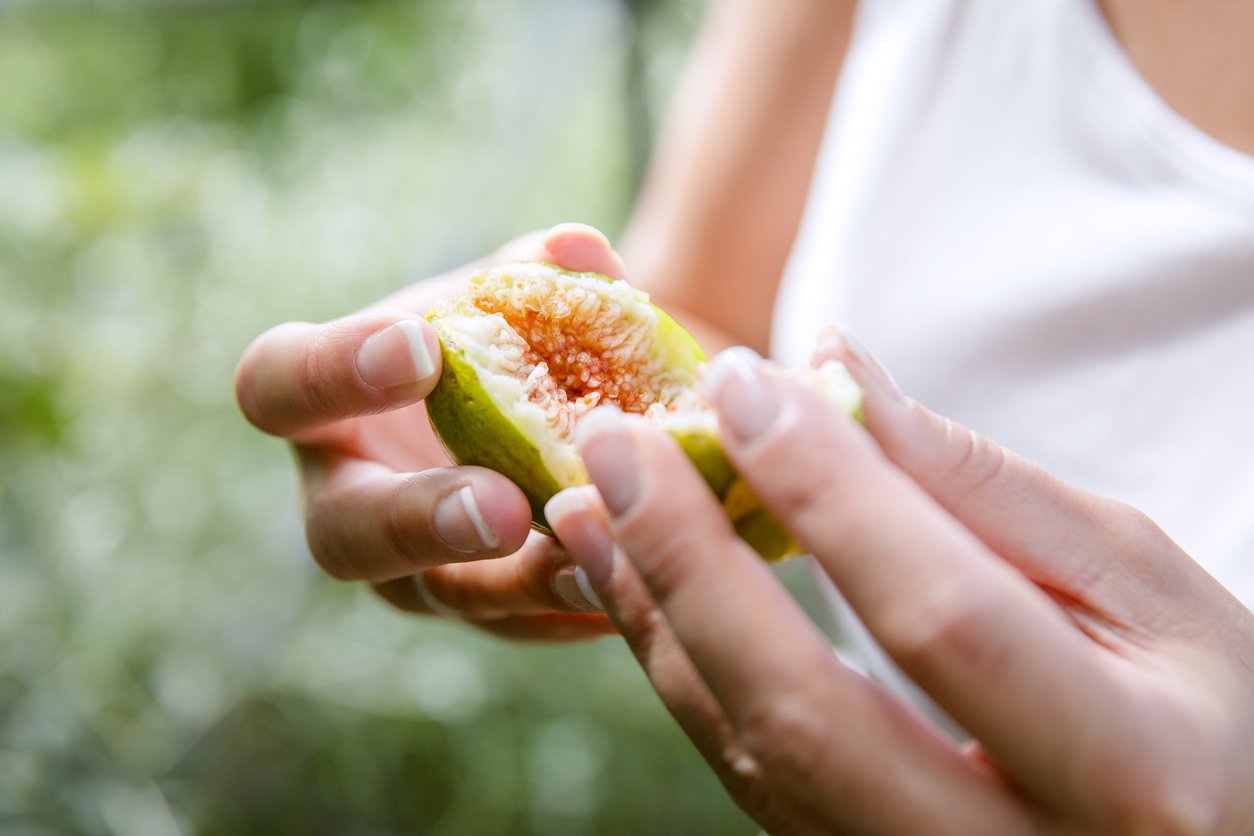
Different varieties of figs have different flavor profiles, which chefs broadly classify in one of three ways: sugar, honey/agave, and berry.
Sugar figs typically feature an inner flesh that varies in color from amber to brown, and their outer skin can exhibit a spectrum of dark hues.
Honey and agave figs, on the other hand, display a golden to yellow inner pulp that can sometimes take on a caramel tone. Their outer casing usually presents in shades of yellow.
And you can identify berry figs by their red to purple inner flesh. Their skin can be either light or dark in color.
For a discussion of the different flavors and uses of figs that should have earned someone a PhD for comprehensiveness and complexity, check out this primer, courtesy of Mountain Figs.
If you’re looking for foods to pair with figs, some common choices include nuts, seeds, cheese analogues, citrus fruits, herbs like thyme or rosemary, and spices like cinnamon or cardamom.
Figs work well in a variety of desserts. Yes, figgy pudding may spring to mind, as well as baked fig bars (think “Newtons,” but homemade and minus corn syrup and sodium benzoate), but you can also deploy figs to great effect in tarts, cakes, and “nice cream” (plant-based frozen dairy analogues).
Figs can also raise the game of non-dessert baked goods such as muffins, pancakes, and breads. And you can make delicious fig spreads, jams, and jellies, and blend figs into sauces and salad dressings.
In terms of savory recipes, figs go well in salads, sliced as hors d’oeuvre toppings, and in savory Mediterranean stews.
Fig Recipes to Try at Home
Step into a world of natural sweetness and wholesome nourishment with the enchanting allure of figs. These delectable fruits, with their unique and captivating flavor, offer a delightful array of health benefits and culinary possibilities that promise to leave your taste buds dancing with joy. If you have been a fig lover for a long time, or you’re just now discovering their culinary potential, there’s something for everyone with these sweet and savory fig recipes!
1. Fig and Hazelnut Smoothie Bowl

If you find yourself in the same smoothie routine, break the mold and give this Fig and Hazelnut Smoothie Bowl a try! Fresh figs have a sweet honey-like taste with a light floral note, giving this nutritious bowl a unique flavor profile. Combined with sweet and nutty hazelnuts and creamy bananas, this creamy smoothie bowl is not only satisfying but also packed with essential nutrients (especially calcium) to kick-start your day on a healthy note.
2. Crumbly Oat and Fig Bars

Crumbly Oat and Fig Bars are a delicious and nutritious treat that combines the wholesome goodness of oats with the natural sweetness of figs. These bars are easy to make and packed with fiber, too — making them a nutritious snack or dessert that delivers that classic Fig Newton flavor with a soft and chewy cookie-like texture. After just one bite, you may find yourself taking a trip down memory lane!
3. Balsamic Fig Jam
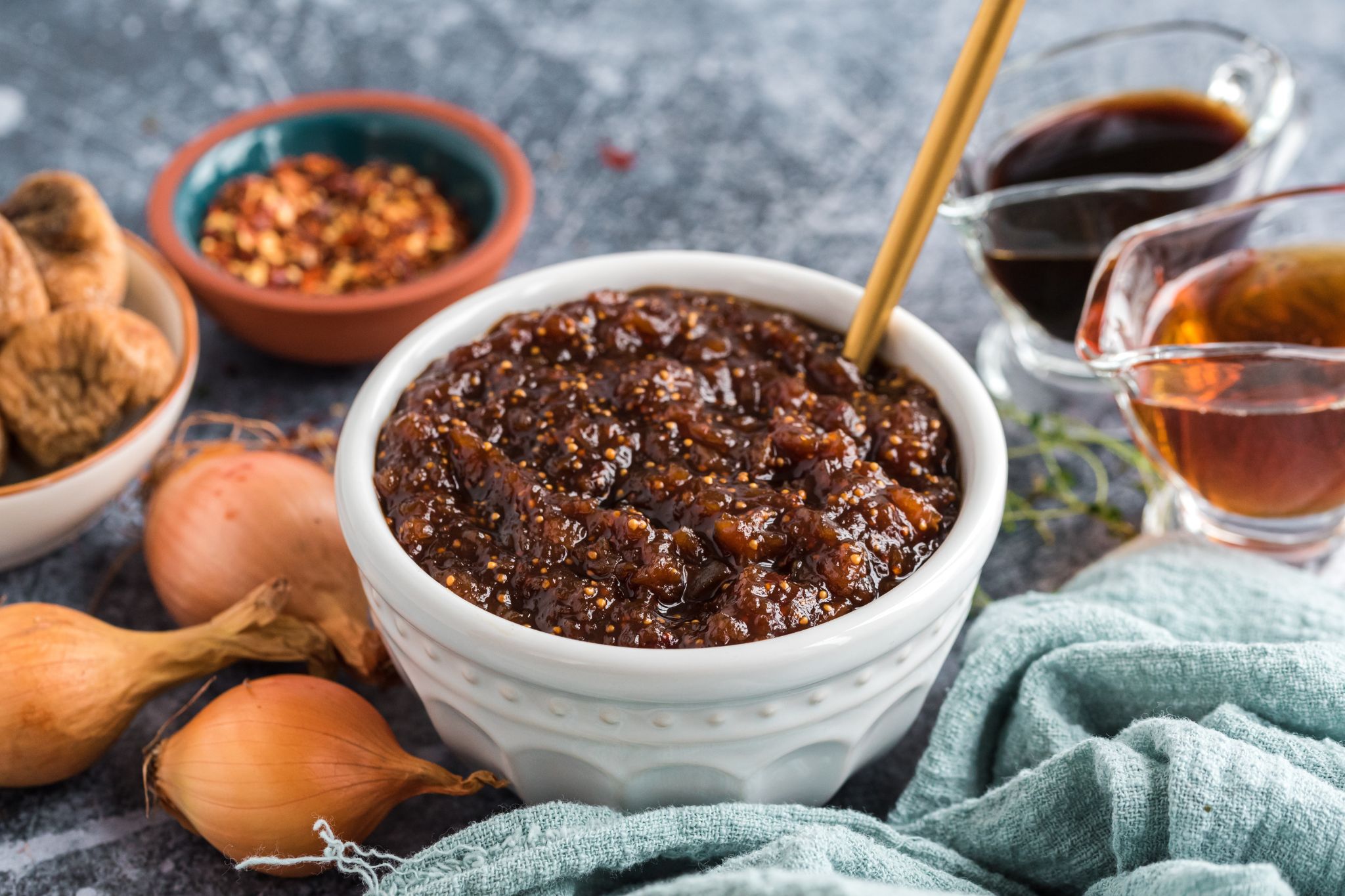
Balsamic Fig Jam is a versatile condiment that combines the sweetness of ripe figs, the tanginess of balsamic vinegar, and the savory, umami flavor of caramelized shallots. This flavorful jam is the perfect way to enjoy the flavor of figs (plus benefit from their fiber and other nutrients). Try it as part of a delicious, sweet and savory breakfast toast or on top of your favorite roasted dishes.
4. Almond Ricotta Pear Toast with Balsamic Fig Jam
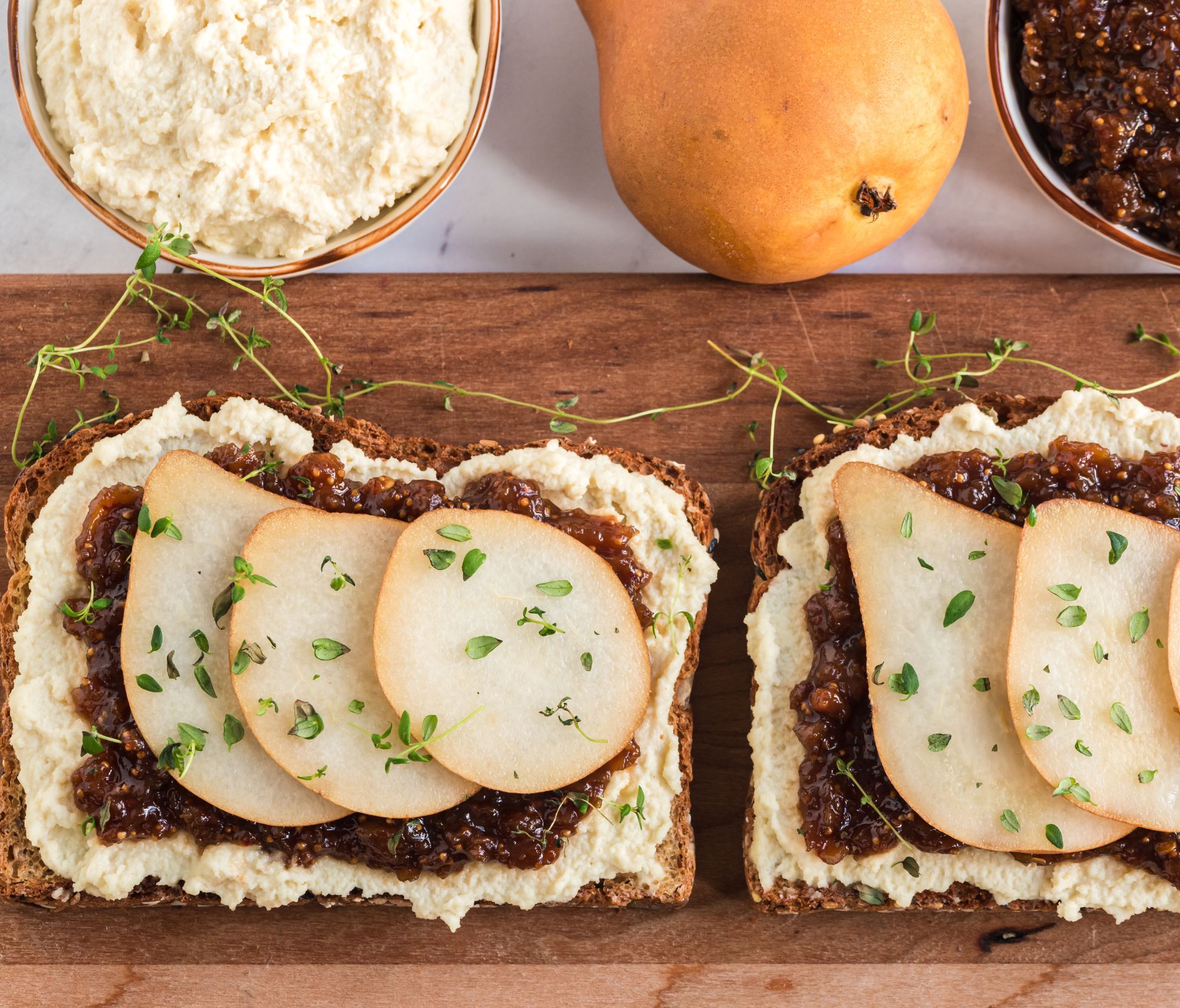
Almond Ricotta Pear Toast with Balsamic Fig Jam is a delightful union of the tangy, sweet, and fruity (from the fig jam) with the creamy and savory (from the almond ricotta). Topped with buttery pear slices, you have a toast that skillfully represents the sweet and savory pairing of fruit and “cheese.”
5. Nutty Harissa Cauliflower and Figs
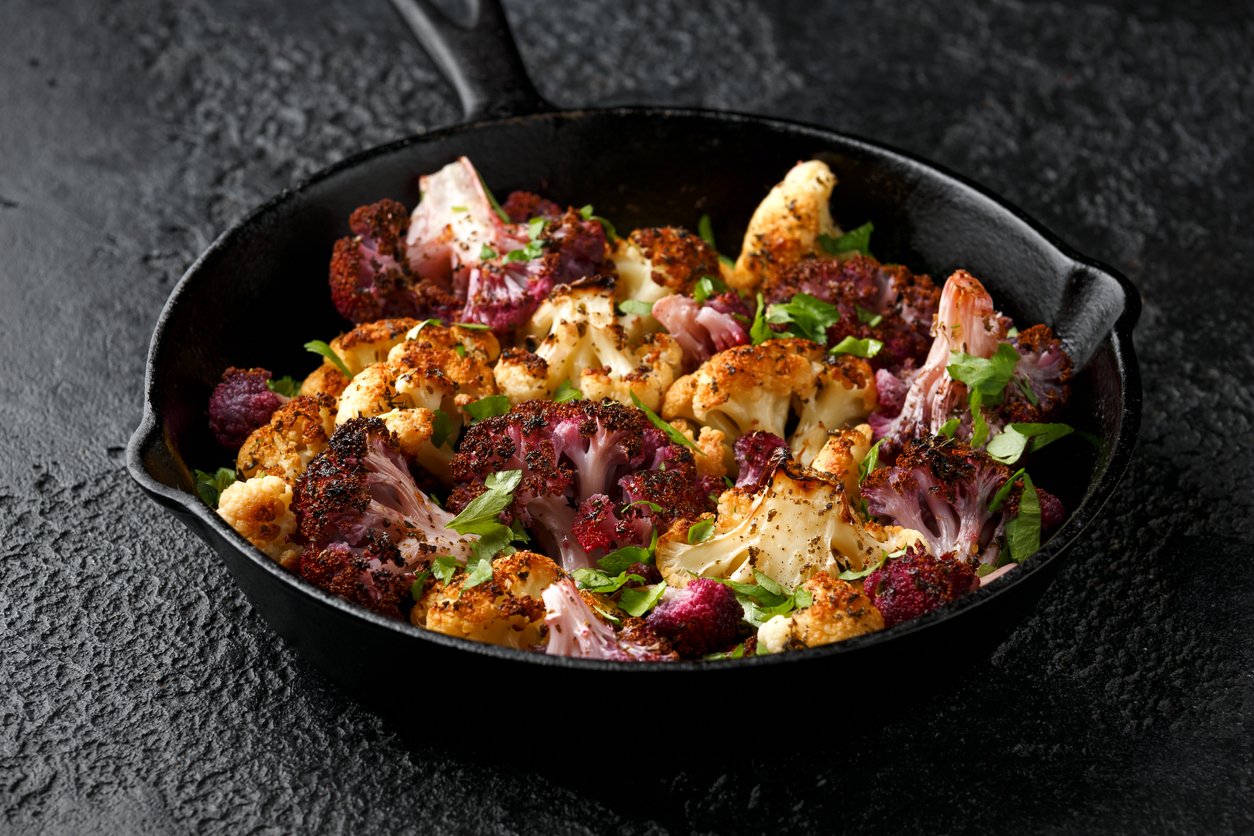
Our Nutty Harissa Cauliflower and Figs is a delightful combination of bold flavors and craveable textures. Despite so many wholesome ingredients, figs manage to steal the show in this recipe. Thanks to their natural sweetness and toffee-like flavor, they are a scrumptious pairing with warm roasted cauliflower and savory pistachios. With just a touch of spice, this spectacular side dish is a one-of-a-kind recipe that will ignite your inner fig enthusiast!
6. Roasted Fig and Walnut Arugula Salad with Wheat Berries and Vegan Feta
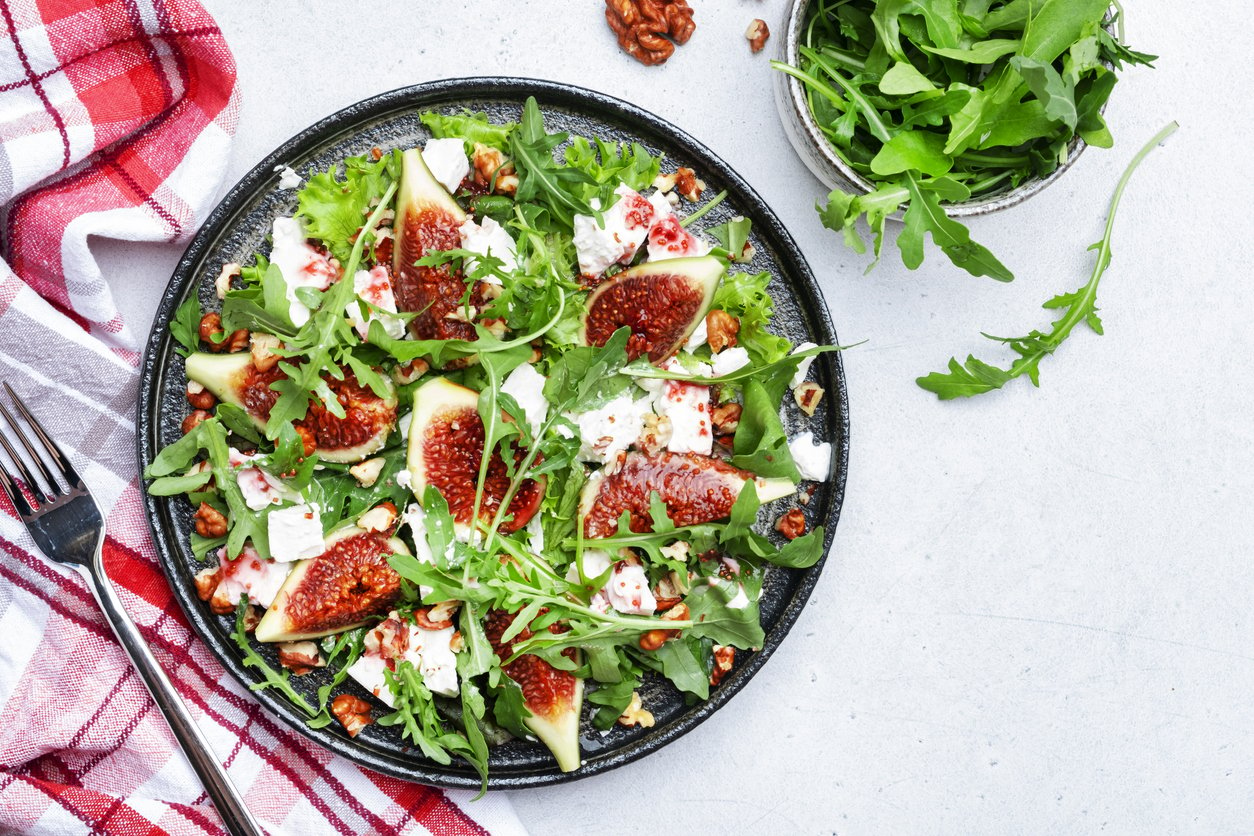
Spicy arugula paired with earthy radish, sweet figs, crunchy walnuts, and a tangy dressing makes for a perfectly balanced salad, both in flavor and nutrition. If you’re a fan of figs, get ready to experience them in a delightful way that just might become your new favorite. If you’re not usually a fan of figs, then this is an opportunity to try this sweet and jammy fruit as part of a flavorful, texture-rich, and nourishing meal.
7. Sweet and Savory Moroccan Vegetable Stew
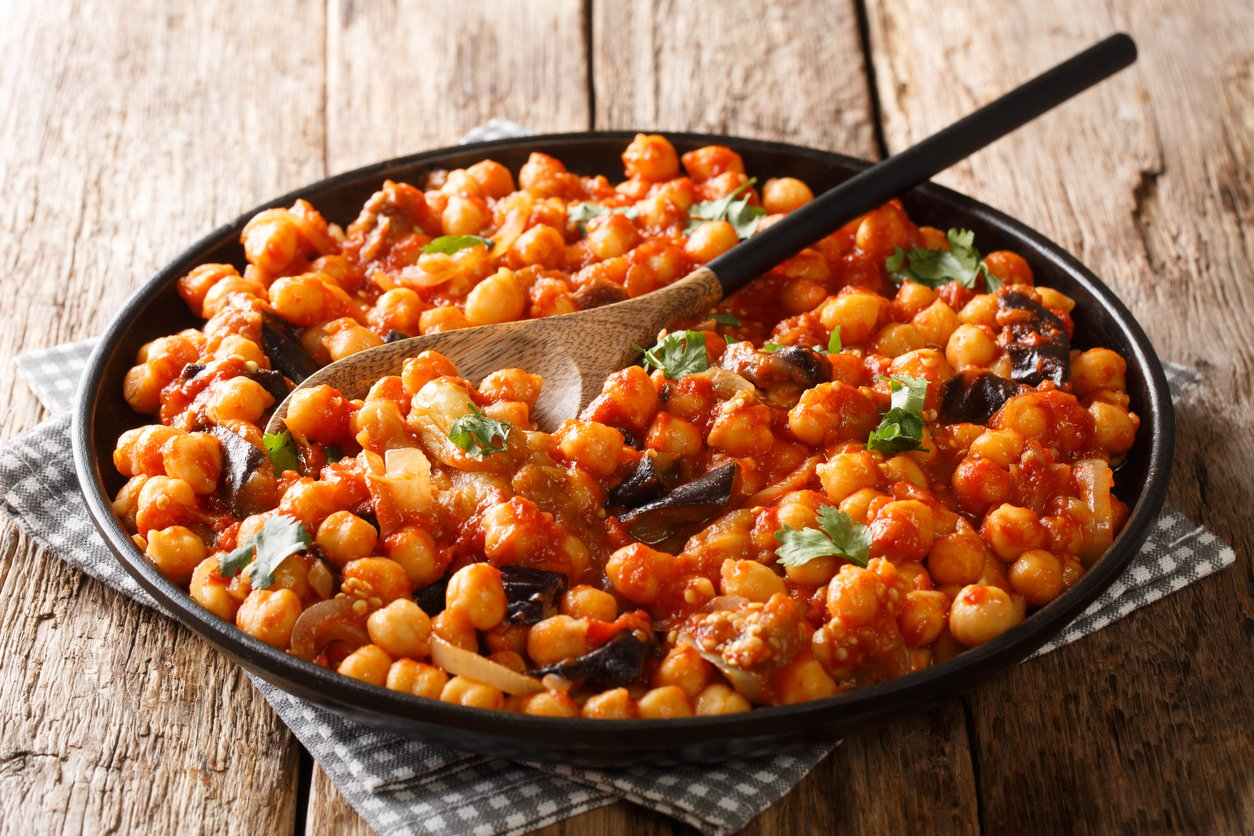
In this Sweet and Savory Moroccan Vegetable Stew, you can explore the flavors of Moroccan cuisine through the rich fruitiness of figs! Figs are commonly found in many sweet and savory Moroccan dishes, which makes them a natural fit for the blend of warm, robust, and soothing spices like turmeric, cinnamon, cardamom, and cumin.
As the stew simmers, the figs soften and infuse their sweetness into the dish, creating a thick and luscious stew base. Together with protein-packed chickpeas and nourishing vitamin- and mineral-rich veggies — like sweet potato, carrots, zucchini, and green beans — this dish is packed with delightful flavors and textures that are sure to tantalize your taste buds.
Get Figgy With It!
Figs are nutritious and versatile fruits that can level up a wide array of recipes. Whether enjoyed fresh or dried, their nutrition and potential health benefits make them a valuable food, especially as a natural sweetener. Now that you understand how to choose, store, and use figs, you can fully take advantage of the rich properties that figs bring to the table.
Tell us in the comments:
-
Are you a fan of figs? Where did you first encounter them?
-
Have you cooked with figs? What have you made?
-
Which fig recipe will you try next?
Featured Image: iStock.com/Elena Sapegina
